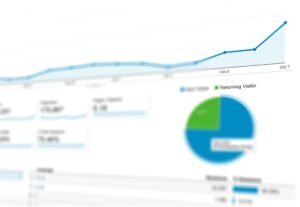Ever felt like your site’s SEO is playing a game of Limbo, bending backward instead of soaring high? If spammy backlinks are clogging up your site, they might be the culprit. These annoying links drag your rankings down, leaving your website in the dust. We’ll chat about spotting these sneaky links and how to disavow spammy backlinks. Imagine your website as a thriving garden—let’s pull out those weeds so it can bloom. Ready to get your SEO groove back? Let’s find out!
Understanding the Need to Disavow Spammy Backlinks
Is your website’s ranking suddenly falling? Spammy backlinks might be to blame. Let’s explore how to disavow spammy backlinks.
These harmful links can damage your site’s reputation. When Google detects too many, penalties may follow, hurting your SEO. This is why disavowing spammy backlinks is crucial. By doing so, you ask Google to ignore these detrimental links, safeguarding your SEO performance.
How to disavow spammy backlinks: Do bad backlinks impact your site? Picture them as rotten apples in your SEO basket. They chip away at your site’s authority, making it seem less reliable. This can lower your search rankings and reduce traffic. Worse yet, they can lead to a manual penalty from Google, akin to getting a red card in a game. This is a situation you want to avoid.
Watch out for these five signs of spammy backlinks:
- Links from low-authority sites
- Content irrelevant to your site’s theme
- A sudden surge in links
- Overly optimized anchor text
- Links from ad-heavy sites
Identifying Spammy Backlinks: What to Look For

Have you noticed a drop in your site’s ranking? Bad backlinks could be the reason. Let’s then further explore how to disavow spammy backlinks. These links often violate Google’s rules for natural linking and harm your SEO. They make your website seem unreliable, leading to penalties and lower search rankings. But how do you identify these sneaky links?
1. Using Google Search Console
Google Search Console is like your trusty detective for website analysis. It helps you see who links to your site. Start by exploring the “Links” section to identify unusual or suspicious links. If you spot anything strange, delve deeper. Look for links from dubious sites or those that don’t align with your content.
2. SEMrush and Toxicity Scores
SEMrush acts as a smart sidekick, giving each link a “toxicity score.” This score indicates how harmful a link might be—the higher the score, the worse the link. High-toxicity links should go straight to your watchlist. Regularly checking these scores keeps your backlink profile healthy.
3. Ahrefs for Link Quality Evaluation
Ahrefs is another essential tool for evaluating link quality. It helps spot patterns in linking domains and identify any harmful links. With Ahrefs, you can check if a link stems from a low-authority site or has suspicious anchor text. If something seems amiss, mark it as a bad link and consider disavowing.
Step-by-Step Guide to Disavowing Spammy Backlinks
This is how to disavow spammy backlinks. Let’s go through the steps using Google’s Disavow Tool. This tool helps you tell Google, “Please ignore these bad links!”
1. Identify Bad Backlinks
First, identify problematic links using tools like Google Search Console, SEMrush, or Ahrefs. They show which links might harm your site by checking for low-quality sites, unrelated content, or suspicious anchor text. Once you’ve compiled a list, proceed to the next step.
2. Create a Disavow Text File
Gather the bad links into a special file. Use a text editor like Notepad and format according to Google’s guidelines. Each line should include one URL or domain. For domains, prefix with “domain:”. Add comments with “#” if necessary. Save this file with a “.txt” extension—your disavow list is ready.
3. Upload to Google Disavow Tool
Go to Google Disavow Tool and pick your site from the menu. Upload your disavow file and submit. This tells Google to disregard those bad links in its ranking evaluations. Patience is key, as improvements might take a few weeks to appear.
4. Monitor and Track Results
After submission, monitor your site’s performance. Check Google Search Console for updates and watch your rankings. Changes may occur within days, or take up to three months. If you see improvements, great! If not, revisit your disavow list.
Best Practices for Effective Backlink Management

Monitoring backlinks is like checking your car’s oil—neglect it, and trouble follows. Regular oversight is crucial for maintaining SEO health. Why? Because harmful backlinks can silently damage your site’s reputation and ranking.
1. Backlink Audit Tools
SEMrush is a favorite for many conducting backlink audits, simplifying the process with its toxicity scores. However, it’s wise not to rely solely on one tool. Ahrefs and Moz also excel in backlink management. These tools help identify harmful links and offer insights to bolster your strategy. Regular audits with these tools keep your backlink profile pristine.
2. Proactive Alerts
Set up alerts for new backlinks—get notifications whenever a new link appears. Evaluate these links, deciding if they’re beneficial or need disavowing. This proactive approach helps effectively manage your SEO and avoid nasty surprises.
Tips for a Healthy Backlink Profile
- Prioritize quality over quantity: Focus on gaining links from reputable sites.
- Avoid link schemes: They can lead to penalties and damage your SEO.
- Conduct regular audits: Use tools like SEMrush to monitor your backlinks.
- Diversify your sources: A varied link profile looks more natural to Google.
- Stay informed: Keep up with Google’s guidelines to ensure compliance.
Recovering SEO Health After Disavowing Links
You’ve informed Google to disregard those disruptive spammy backlinks, so what’s next? Patience is essential now. Google’s processing of disavow requests can take several weeks, during which your rankings may fluctuate. Monitor your site’s performance and be prepared for adjustments on the ranking ladder.
Wondering how to gauge if your SEO health is improving? Regularly check traffic and rankings using tools like Google Analytics and Search Console. Positive shifts in organic traffic and keyword positions indicate you’re on the right track!
Conlusion
When it comes to how to disavow spammy backlinks, it can feel like a big step in keeping your website healthy. We’ve walked through identifying harmful links using cool tools like SEMrush and Ahrefs. Remember, those bad backlinks affect your site’s rep and ranking.
When done right, disavowing unwanted links can help your SEO bounce back. Stick with best practices and set up regular audits. Use tools to keep your backlink profile in check. It might take some time, but the wait is worth it for your site’s health. Keep tweaking and improving, and watch your rankings climb!
FAQ
How to disavow spammy backlinks?
Disavowing backlinks means telling Google to ignore certain links. You identify harmful ones, make a text file listing them, and upload it to Google’s Disavow Tool. Check your results after a few weeks.
What is disavow in SEO?
In SEO, disavowing helps you avoid penalties from harmful links. When you disavow, you’re asking Google to disregard links that could hurt your website’s rankings and authority.
Should I disavow toxic backlinks?
Yes, disavow toxic backlinks to protect your site’s SEO. These links might cause rankings to drop or lead to a penalty. Not all low-quality links need it, but toxic ones should be disavowed.




